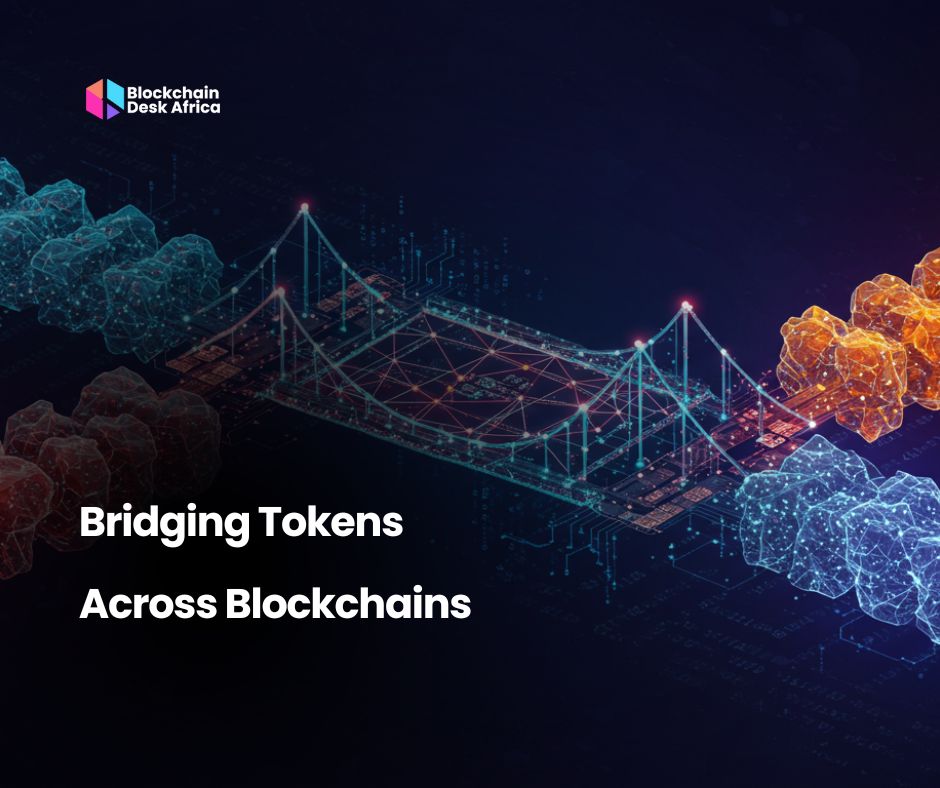With multiple blockchain ecosystems thriving, users often need to move assets from one network to another. Want to use your ETH on the BNB Chain or Solana? You’ll need to allow you to transfer tokens between networks, maintaining value and enabling cross-bridge.
A blockchain bridge -chain interoperability. This guide will walk you through how to bridge tokens safely and efficiently.
What Is a Blockchain Bridge?
A blockchain bridge is a decentralised protocol that enables tokens, data, and smart contract instructions to move between separate blockchains. Essentially, it acts as a two-way street, allowing assets from one chain to be used on another.
Example: You might bridge ETH from Ethereum to the BNB Chain, where it arrives as wrapped ETH (WETH) — a 1:1 representation usable within the BNB ecosystem.
How Blockchain Bridges Work
There are two common ways blockchain bridges operate:
- Wrapped Asset Method
When you initiate a bridge transfer:
- Your original tokens are locked in a smart contract on the source chain (e.g., Ethereum).
- At the same time, an equivalent amount of “wrapped” tokens is minted on the destination chain (e.g., BNB Chain).
- These wrapped tokens are fully backed and can be later burned to unlock the original assets.
2. Liquidity Pool Method
- Bridges maintain token pools on both chains.
- When you swap one token for another, the protocol directly draws from the liquidity pools.
- This allows near-instant bridging without needing to mint or burn wrapped assets.
Some bridges may also integrate oracles or relayers to validate transactions and maintain asset parity across chains, ensuring high levels of security and data accuracy.
Why Bridging Matters
Different blockchains excel in different areas. Bridging lets you:
- Reduce fees by moving to low-cost networks
- Speed up transactions by choosing faster chains
- Access new dApps, games, or DeFi protocols exclusive to specific ecosystems
- Participate in airdrops or staking opportunities only available on certain networks
Step-by-Step: Bridging ETH to BNB Chain
1. Choose a Bridge:
- Go to a trusted bridge like https://www.bnbchain.org/en/bridge, or you can bridge tokens using the Binance exchange, visit Binance.com. If you already have an account, click “Log In” in the top right corner of the homepage.
- Log in with your details
- Enter your credentials to access your account.
- From your dashboard, navigate to Wallet, then select Fiat and Spot to view your deposit and withdrawal options.
- Deposit
- In the Deposits and Withdrawals section, locate the asset you wish to deposit and click on Deposit next to it.
- Select the blockchain network you wish to use for the deposit. Then, copy the provided deposit address into your MetaMask wallet and confirm the transaction.
- Once the deposit is confirmed and the asset reflects in your balance, return to the Deposits and Withdrawals section and initiate a withdrawal, selecting a different blockchain network as the destination.
4. Withdraw
- Enter the recipient wallet address where you want the assets to be withdrawn. Make sure the address is compatible with the selected blockchain network.
- Click on Network to select your preferred blockchain for the withdrawal. Incompatible networks will be automatically filtered out to prevent errors.
- Enter the amount you wish to withdraw, then confirm the transaction using your two-factor authentication (2FA) for added security.
You have now successfully bridged assets using the Binance platform. Binance makes it easy to bridge not only to the BNB Chain but also to other EVM-compatible and non-EVM blockchains. An added benefit of bridging to the BNB Chain via Binance is that it doesn’t require holding BNB to cover gas fees. However, a small withdrawal fee, deducted from the token you’re transferring, is applied to cover network transaction costs.
Important Reminders
- Always use audited and reputable bridges
- Keep native tokens for gas fees on both chains
- Never bridge your entire balance—test with a small amount first
Bridging tokens unlock the full potential of multichain DeFi. It empowers you to move freely between ecosystems, optimise for fees, and tap into new opportunities. Just make sure you stay security-conscious and always double-check destinations.
Read also: How to Swap Tokens Using PancakeSwap and Uniswap
